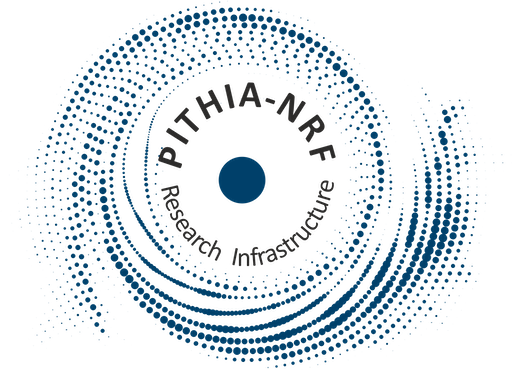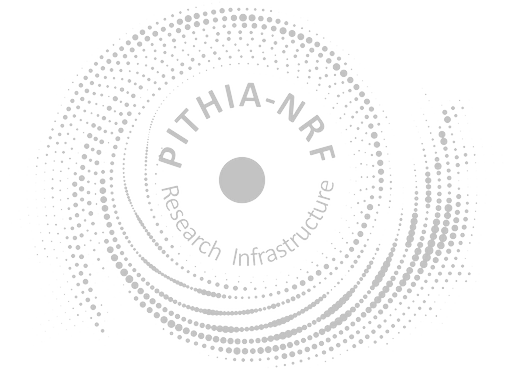<?xml version="1.0" encoding="UTF-8"?>
<AcquisitionCapabilities xmlns="https://metadata.pithia.eu/schemas/2.2" xmlns:mrl="http://standards.iso.org/iso/19115/-3/mrl/1.0" xmlns:xsi="http://www.w3.org/2001/XMLSchema-instance" xmlns:gco="http://standards.iso.org/iso/19115/-3/gco/1.0" xmlns:xlink="http://www.w3.org/1999/xlink" xsi:schemaLocation="https://metadata.pithia.eu/schemas/2.2 https://metadata.pithia.eu/schemas/2.2/pithia.xsd">
<identifier>
<PITHIA_Identifier>
<localID>AcquisitionCapabilities_LOFAR_beamforming</localID>
<namespace>astron</namespace>
<version>1</version>
<creationDate>2023-10-11T17:30:00Z</creationDate>
<lastModificationDate>2023-10-18T10:30:00Z</lastModificationDate>
</PITHIA_Identifier>
</identifier>
<name>LOFAR Acquisition Capabilities in Beamforming mode</name>
<description>
Individually sampled quadrature components of received voltage in each channel of the array are
coherently summed with phase shifting to form a beam in the given direction. The receiver voltages
are sampled within a broad band that is split in sub-bands for individual processing and report.
Effectively, LOFAR in this operational mode behaves as a large set of receivers operating in
different subbands.
</description>
<capabilities>
<processCapability>
<name>ReceiverBeamVoltage</name>
<observedProperty xlink:href="https://metadata.pithia.eu/ontology/2.2/observedProperty/EM-Wave_ElectricFieldStrength"/>
<dimensionalityInstance xlink:href="https://metadata.pithia.eu/ontology/2.2/dimensionalityInstance/1D"/>
<dimensionalityTimeline xlink:href="https://metadata.pithia.eu/ontology/2.2/dimensionalityTimeline/2DTimeseriesStacked"/>
<cadence unit="second">0.00000512</cadence> <!-- 195312.5 Hz sampling rate -->
<units xlink:href="https://metadata.pithia.eu/ontology/2.2/unit/count"/>
</processCapability>
</capabilities>
<!-- Instrument that has these acquisition capabilities -->
<instrumentModePair>
<InstrumentOperationalModePair>
<instrument xlink:href="https://metadata.pithia.eu/resources/2.2/instrument/astron/Instrument_LOFAR_station"/>
<mode xlink:href="https://metadata.pithia.eu/resources/2.2/instrument/astron/Instrument_LOFAR_station#beamforming"/>
</InstrumentOperationalModePair>
</instrumentModePair>
<inputDescription>
<InputOutput>
<!-- Input description defines a parameter of the acquisition as selected by the experimenter.
Provide only name and description, no values: this field describes the capability, not the setting itself.
If this inputDescription is a parameter that has a specific constant value for the whole collection, use om:parameter field of the DataCollection
document to define such NamedValue, point its NamedValue.name to this name below, and use NamedValue.value to set the value -->
<name>BeamDirection</name> <!-- no spaces please -->
<description>
<mrl:LE_Source>
<mrl:description><gco:CharacterString>
In its beamforming mode, LOFAR controls the direction of the beam.
</gco:CharacterString></mrl:description>
</mrl:LE_Source>
</description>
</InputOutput>
</inputDescription>
<inputDescription>
<InputOutput>
<!-- Input description defines a parameter of the acquisition as selected by the experimenter.
Provide only name and description, no values: this field describes the capability, not the observation result.
If this inputDescription is a parameter that has a specific constant value for the whole collection, use om:parameter field of the DataCollection
document to define such NamedValue, point its NamedValue.name to this name below, and use NamedValue.value to set the value -->
<name>FrequencyChannels</name> <!-- no spaces please -->
<description>
<mrl:LE_Source>
<mrl:description><gco:CharacterString>
TODO
</gco:CharacterString></mrl:description>
</mrl:LE_Source>
</description>
</InputOutput>
</inputDescription>
<inputDescription>
<InputOutput>
<!-- Input description defines a parameter of the acquisition as selected by the experimenter.
Provide only name and description, no values: this field describes the capability, not the setting itself.
If this inputDescription is a parameter that has a specific constant value for the whole collection, use om:parameter field of the DataCollection
document to define such NamedValue, point its NamedValue.name to this name below, and use NamedValue.value to set the value -->
<name>TimeResolution</name> <!-- no spaces please -->
<description>
<mrl:LE_Source>
<mrl:description><gco:CharacterString>
TODO
</gco:CharacterString></mrl:description>
</mrl:LE_Source>
</description>
</InputOutput>
</inputDescription>
<inputDescription>
<InputOutput>
<!-- InputDescription is a parameter of the acquisition selected by the experimenter.
Provide only name and description, no values: this field describes the capability, not the setting itself.
If this inputDescription is a parameter that has a specific constant value for the whole collection, use om:parameter field of the DataCollection
document to define such NamedValue, point its NamedValue.name to this name below, and use NamedValue.value to set the value -->
<name>AntennaSelection</name> <!-- no spaces please -->
<description>
<mrl:LE_Source>
<mrl:description><gco:CharacterString>
TODO
</gco:CharacterString></mrl:description>
</mrl:LE_Source>
</description>
</InputOutput>
</inputDescription>
</AcquisitionCapabilities>

